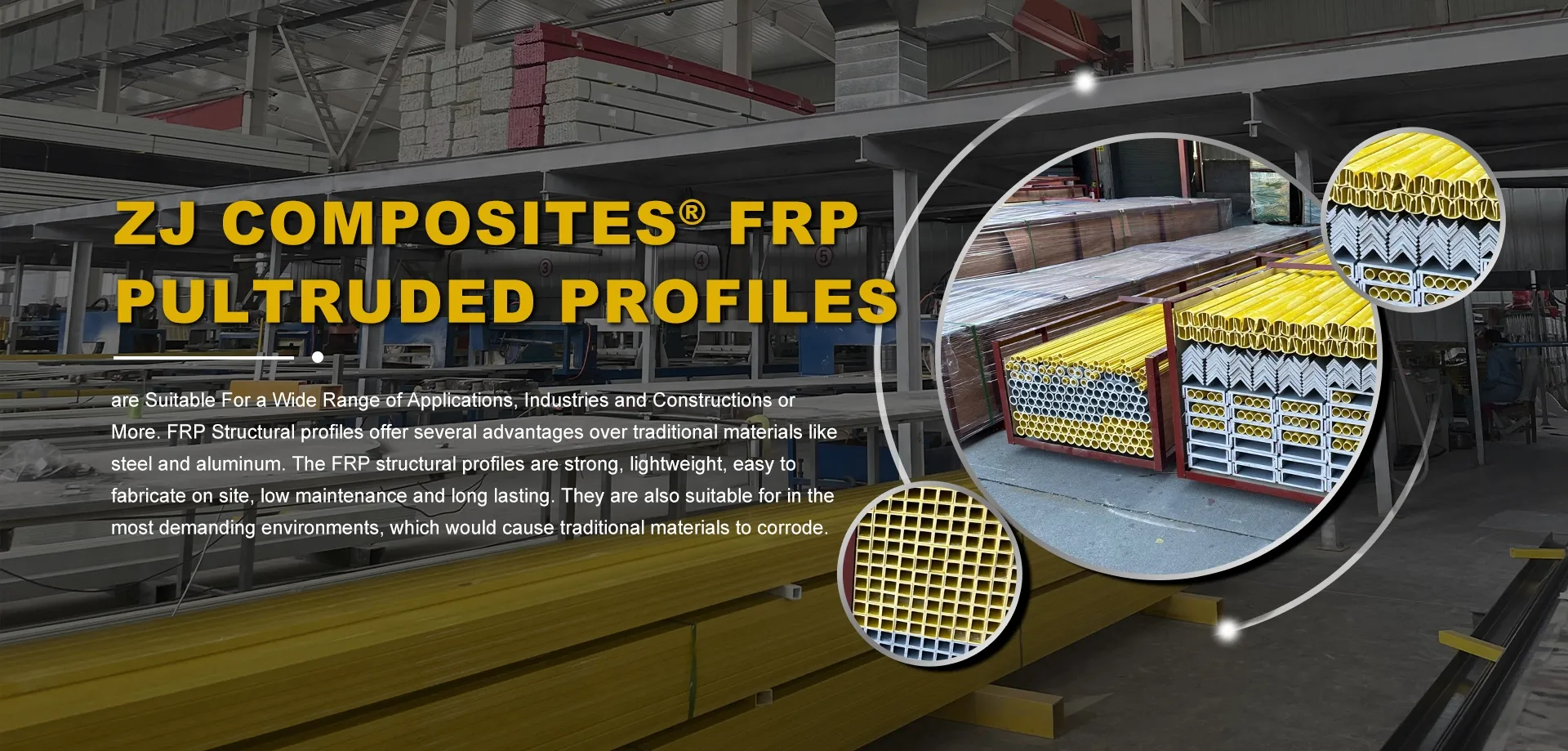loading...
- No. 9, Xingyuan South Street, Dongwaihuan Road, Zaoqiang County, Hengshui, Hebei, China
- admin@zjcomposites.com
- +86 15097380338
- Welcome to visit our website!
Exploring the Applications and Benefits of Grating in FRP Materials and Design
Understanding Grating and Its Applications in FRP (Fiberglass Reinforced Plastic)
Grating is an essential structural component that finds extensive applications in various industries, particularly in environments requiring durability, corrosion resistance, and lightweight characteristics. Fiberglass Reinforced Plastic (FRP), a composite material made of a polymer matrix reinforced with fiberglass fibers, is increasingly being used for grating systems. This article explores the benefits, applications, and design considerations of FRP grating, shedding light on its importance in modern engineering and construction.
One of the primary advantages of FRP grating is its exceptional resistance to corrosion. Traditional materials like steel and aluminum often succumb to rust or corrosion when exposed to harsh chemicals or marine environments. In contrast, FRP grating is engineered to withstand a variety of corrosive substances, making it an excellent choice for chemical plants, wastewater treatment facilities, and marine applications. This durability extends the lifespan of structures, reducing the need for frequent maintenance and replacements, which can be both time-consuming and costly.
Understanding Grating and Its Applications in FRP (Fiberglass Reinforced Plastic)
The non-conductive nature of FRP is another important feature that enhances its appeal in specific applications. In environments where electrical safety is paramount, such as electrical substations or areas with flammable materials, non-conductive FRP grating minimizes the risk of electrical hazards. This property makes FRP grating a safe option for various industrial applications.
grating frp

Additionally, FRP grating provides excellent slip resistance, which is vital for ensuring safety in walkways and platforms. Many manufacturers produce FRP grating with textured surfaces, improving traction even in wet or oily conditions. This feature is especially important in industries such as food processing, where spills can create hazardous environments.
When it comes to design considerations, FRP grating systems can be tailored to meet specific load-bearing requirements. The material can be fabricated into various shapes, sizes, and load configurations, allowing engineers to customize solutions for different applications. Standard grating options include molded, pultruded, and machined designs, each offering unique advantages depending on the project requirements.
Moreover, the aesthetic versatility of FRP grating allows it to be integrated into architectural designs while maintaining functionality. Available in various colors and finishes, FRP grating can enhance the visual appeal of walkways, platforms, and other structures, making it suitable for public spaces and commercial buildings.
In conclusion, FRP grating stands out as a robust and efficient alternative to traditional grating materials, offering a host of benefits including corrosion resistance, lightweight properties, electrical insulation, and slip resistance. Its versatility in design and application makes it a preferred choice across a range of sectors, from industrial to commercial. By embracing the advantages of FRP grating, industries can enhance safety, reduce maintenance costs, and ensure long-lasting performance in their structural applications. As technology advances and the demand for sustainable materials grows, FRP grating will likely play an increasingly prominent role in future construction and engineering projects.
-
The Rise of FRP Profiles: Strong, Lightweight, and Built to LastNewsJul.14,2025
-
SMC Panel Tanks: A Modern Water Storage Solution for All EnvironmentsNewsJul.14,2025
-
GRP Grating: A Modern Solution for Safe and Durable Access SystemsNewsJul.14,2025
-
Galvanized Steel Water Tanks: Durable, Reliable, and Ready for UseNewsJul.14,2025
-
FRP Mini Mesh Grating: The Safer, Smarter Flooring SolutionNewsJul.14,2025
-
Exploring FRP Vessels: Durable Solutions for Modern Fluid HandlingNewsJul.14,2025
-
GRP Structures: The Future of Lightweight, High-Performance EngineeringNewsJun.20,2025
